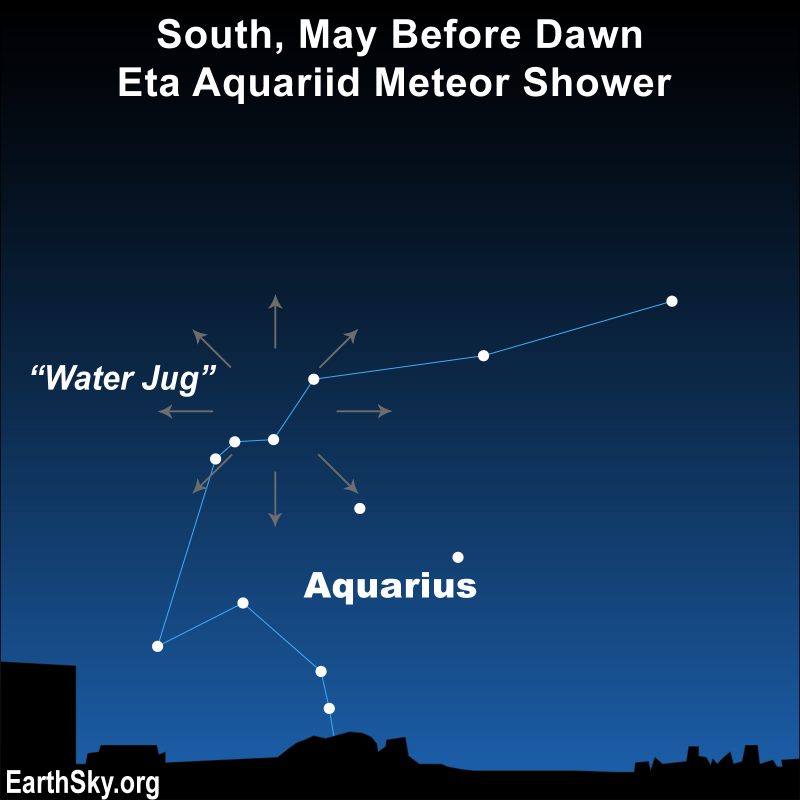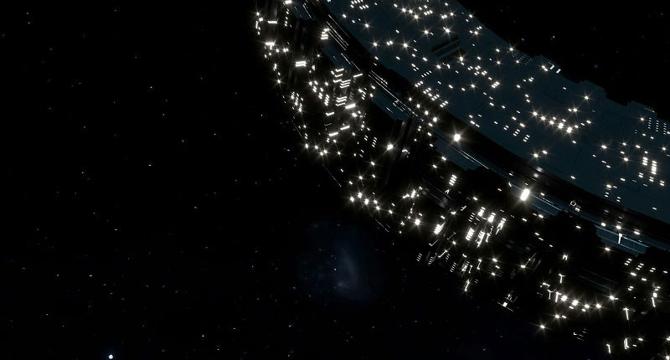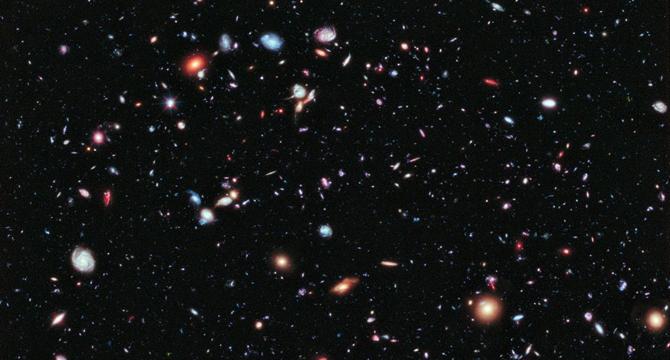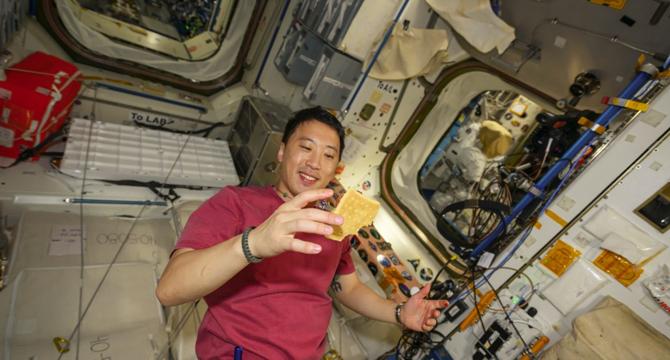Space News
Spaceflightnow
398

Live coverage: SpaceX to launch 29 Starlink satellites on Falcon 9 rocket from NASA’s Kennedy Space Center
- SpaceX is set to launch 29 Starlink V2 Mini Optimized satellites on a Falcon 9 rocket from NASA’s Kennedy Space Center.
- These satellites are lighter than previous versions and liftoff is scheduled for Sunday, May 4, at 4:53 a.m. EDT.
- Weather forecast for the launch window shows a 55 percent chance of favorable conditions, with concerns about various cloud types.
- The Falcon 9 first stage booster will attempt a landing on the SpaceX droneship after the launch, marking it as the 107th landing on that droneship.
Read Full Article
23 Likes
Earthsky
317

Image Credit: Earthsky
Astronomers respond to President’s FY 2026 budget request
- Astronomers express concerns over President's FY 2026 budget request, citing proposed cuts to National Science Foundation, NASA's Science Mission Directorate, and Department of Energy's Office of Science.
- American Astronomical Society warns that these cuts may lead to the loss of American leadership in science and drive scientific talent to other countries or professions.
- Proposed budget includes significant reductions in federal spending for NASA, NSF, and DOE's Office of Science, raising apprehensions within the scientific community.
- The American Astronomical Society emphasizes the importance of federal funding for sustaining scientific research, innovation, and workforce development in the United States.
Read Full Article
19 Likes
Spaceflightnow
178

SpaceX puts Vandenberg launch on hold
- SpaceX has put the Vandenberg launch of Starlink 15-3 mission on hold with no new launch date announced.
- The mission aims to send 26 Starlink V2 Mini satellites into low Earth orbit, using Falcon 9 first stage booster, tail number 1081.
- The launch, targeting Sunday, May 4, will see the booster landing on the SpaceX droneship 'Of Course I Still Love You'.
- FAA accepted an assessment allowing SpaceX to increase launches from SLC-4E from 36 to 50, leading to more Falcon 9 launches in the Southwest U.S.
Read Full Article
10 Likes
Spaceflightnow
0

Proposed 24 percent cut to NASA budget eliminates key Artemis architecture, climate research
- The proposed federal spending budget for FY26 includes a 24.3% funding cut for NASA, decreasing its budget to $18.8 billion.
- Significant cuts are directed towards the space and Earth science divisions, affecting programs and research areas.
- While Human Space Exploration receives over $7 billion for lunar exploration, funding for Mars-focused programs increases by $1 billion.
- The budget aims to phase out the Mars Sample Return mission and eliminate funding for low-priority climate monitoring satellites.
- Several organizations, including the American Astronomical Society, express alarm over the proposed cuts affecting space science research and talent pipeline.
- The proposed budget suggests reallocating funds for lunar exploration and Mars programs, planning to end the Artemis Program and Moon-orbiting Gateway.
- The White House aims to transition NASA away from the Space Launch System and Orion spacecraft towards more cost-effective commercial systems.
- Proposed cuts would impact International Space Station spending, reducing crew and cargo flights while preparing for decommissioning by 2030.
- The budget proposals are subject to Congress approval, with concerns raised by members like Rep. Whitesides and Rep. Meng regarding potential impacts on NASA.
- Several representatives express alarm at the cuts, highlighting risks to scientific leadership, workforce, and advancements in space technology.
Read Full Article
Like
Discover more
Guardian
125
Image Credit: Guardian
Tech oligarchs are gambling our future on a fantasy | Adam Becker
- Tech billionaires' embrace of the far right is not a sudden shift but a return to the core ideology of Silicon Valley, characterized by far-right libertarian views.
- The leaders of the tech industry have always held right-wing ideals, evident in their visions of the future, such as Elon Musk's dream of Mars colonization and Sam Altman's belief in super-intelligent AI.
- These futuristic visions reflect desires for total autocratic control and libertarian paradises, where companies like SpaceX and Amazon hold immense power over residents of Mars colonies or space stations.
- AI is another cornerstone of tech billionaires' future dreams, despite doubts among AI researchers about achieving AGI (Artificial General Intelligence) in the near future.
- The concept of the Singularity, where AI surpasses human capabilities, is deeply ingrained in Silicon Valley's worldview, portraying a utopian future where democracy becomes obsolete.
- The faith in technological salvation drives tech oligarchs to bet on AGI solving complex global issues like climate change, with figures like Eric Schmidt and Sam Altman banking on AI to provide solutions.
- Altman's optimism in using AGI to address climate crises, by asking it to solve fundamental problems at planetary scales, raises concerns about the practicality of relying on nonexistent super-intelligence.
- The tech billionaires' unwavering belief in a techno-utopian future offers them moral justification but lacks tangible benefits for the broader society, emphasizing an increasing disconnect from reality.
- Adam Becker, a science journalist and astrophysicist, delves into the tech oligarchs' ideologies and their pursuits in his book 'More Everything Forever', highlighting the impact of Silicon Valley on humanity's future.
Read Full Article
7 Likes
Earthsky
286

Image Credit: Earthsky
2025 Eta Aquariid meteor shower: All you need to know
- The Eta Aquariid meteor shower in 2025 is predicted to peak on the mornings of May 5 and 6, with elevated numbers of meteors expected a few days before and after.
- The peak times vary between experts, with different sources listing 15 UTC on May 5 and 3 UTC on May 6 as the peak times.
- The best time to watch this shower is in the hours before dawn on May 5 and 6, 2025, under a dark and moonless sky.
- The Eta Aquariid meteor shower is best viewed in the Southern Hemisphere or southern latitudes due to the radiant's position in the sky.
- The radiant point of the Eta Aquariids is near the star Eta Aquarii in the constellation Aquarius, rising in the wee hours and climbing toward its highest point at dawn.
- No special equipment is required to watch the meteor shower; finding a dark, open sky away from artificial lights is ideal.
- The Eta Aquariids' parent comet is Halley's Comet, responsible for this shower and the Orionids, with 2025 marking a year to observe these meteors.
- Halley's Comet orbits the sun roughly every 76 years, with the comet heading back toward the inner solar system in 2061.
- Eta Aquariid meteor shower photos captured by enthusiasts show the beauty of these meteors streaking across the sky.
- May's Eta Aquariid meteor shower is best viewed around May 5 and 6, 2025, in the hours before dawn for optimal meteor sightings.
Read Full Article
17 Likes
Earthsky
304

Image Credit: Earthsky
See the best deep-sky photos of April 2025 here
- The EarthSky community showcases stunning deep-sky photos captured by talented astrophotographers in April 2025.
- Notable images include the Orion Nebula captured by Muhammad Alaa, diffuse nebulae in Sagittarius by Tameem Altameemi, and the Crab Nebula by Marcy Curran.
- Jelieta Walinski photographed the Monkey Head Nebula, while Steven Bellavia captured the Polarissima Cluster and Tameem Altameemi the Hercules Cluster.
- Galaxies like the Leo Triplet by Shireen Gonzaga, Messier 106 by Mohammed Abdallah, and Markarian’s Chain by Kris Hazelbaker were also featured.
- Additionally, Steven Bellavia photographed the Sombrero Galaxy, Brian Peel captured Messier 106, and Steven Bellavia the spiral galaxy Messier 81.
- The diverse range of deep-sky photos offers a glimpse into the beauty and vastness of the universe, inviting viewers to appreciate the wonders of space.
- Submit your own Earth or sky photos to EarthSky Community Photos for a chance to share your work and be part of the community's collection of breathtaking images.
Read Full Article
18 Likes
Knowridge
362

Image Credit: Knowridge
How sound waves could help track space junk and meteors
- Scientists are using infrasound to detect and track falling meteoroids and space debris, as presented at the European Geosciences Union General Assembly.
- Infrasound, a type of low-frequency sound, is produced when meteoroids or space debris break apart and create shock waves known as bolides.
- Elizabeth Silber from Sandia National Laboratories studied infrasound signals to reveal the paths of objects entering Earth’s atmosphere, using data from infrasound stations.
- Infrasound can reliably track objects entering the atmosphere steeply, but faces challenges in tracking objects entering more horizontally, highlighting the importance of improving monitoring for space debris.
Read Full Article
21 Likes
Ubergizmo
255

Image Credit: Ubergizmo
Soviet Kosmos 482 Spacecraft Set For Uncontrolled Reentry
- Soviet Kosmos 482 spacecraft's descent module, launched in 1972, is expected to make an uncontrolled reentry into Earth's atmosphere around May 10, 2025.
- Kosmos 482 failed its mission to Venus due to a malfunction and got trapped in an elliptical orbit around Earth, with the descent module remaining in orbit for over five decades.
- The 495-kilogram descent module is predicted to reenter Earth's atmosphere at a speed of 242 km/h, and its reinforced design may allow it to survive reentry largely intact, posing a non-zero impact risk.
- The module could land anywhere between 52°N and 52°S latitude, covering large portions of continents, but the most probable outcome is a splashdown in water. Satellite trackers are monitoring the trajectory for more accurate reentry predictions.
Read Full Article
15 Likes
Guardian
398
Image Credit: Guardian
Elon Musk’s company town: SpaceX employees to vote on ‘Starbase’
- Elon Musk is seeking to establish a new city called Starbase in south Texas, where SpaceX conducts rocket launches.
- The creation of Starbase would give Musk influence over a company town, a rare situation in the modern US business landscape.
- Most residents in the area are SpaceX employees, making the incorporation of Starbase almost certain.
- Starbase's population is primarily made up of SpaceX employees and their relatives, with around 500 residents, including 260 SpaceX workers.
- The proposed mayor of Starbase, Bobby Peden, and other city commissioner candidates are all SpaceX employees running unopposed.
- Despite opposition from groups like the South Texas Environmental Justice Network, Starbase's incorporation is likely to proceed.
- The creation of Starbase could grant SpaceX leadership control over land use and logistics related to launches.
- Elon Musk has voiced ambitions for Starbase to grow significantly, with projections of several thousand more residents in the near future.
- Musk has shifted focus to SpaceX as it gains importance in his business portfolio, especially amid SpaceX's lucrative contracts and Tesla's challenges.
- Having relocated to Texas, Musk initially moved to a $35 million compound in Austin before briefly residing in Pennsylvania during political events in 2021.
Read Full Article
23 Likes
Livescience
85

Image Credit: Livescience
Science news this week: International blackouts and 'T. rex skin' handbags
- An international blackout affected Spain, Portugal, and southern France, with the cause still unknown.
- Experts considered induced atmospheric vibrations from extreme temperature changes as a possible cause.
- This incident highlights the vulnerability of electricity networks to climate change effects.
- Scientists in China introduced a safer nuclear energy approach using U.S. technology.
- Companies are exploring creating luxury accessories using lab-made T. rex "leather."
- The idea is to offer a cruelty-free and eco-friendly alternative to traditional leather products.
- Though T. rex collagen has been found, its fragmented nature raises doubts about lab-made "leather."
- Gravity's role in burping in space and an 18th-century mummification technique were also topics of interest.
- An 18th-century Austrian vicar's mummified remains revealed a unique embalming method.
- A Soviet satellite, Kosmos 482, is set to reenter Earth next week, potentially causing harm if it lands in a populated area.
Read Full Article
5 Likes
Arstechnica
228

Image Credit: Arstechnica
We finally know a little more about Amazon’s super-secret satellites
- The first production satellites for Amazon's Kuiper broadband network launched last week, providing a glimpse of the real satellites in a video posted on social media.
- The 40-second clip shows the Kuiper satellites separating from their launch vehicle in space after liftoff from Cape Canaveral Space Force Station, Florida.
- Amazon had been secretive about their satellites since unveiling Project Kuiper in 2019, but the recent video offers a rare insight into the satellite design and deployment.
- Images released previously showed Amazon's satellite factory in Seattle and how spacecraft are transported to their launch base in Florida.
Read Full Article
13 Likes
Knowridge
438

Image Credit: Knowridge
Some ‘Star Wars’ stories have already become reality
- The phrase 'A long time ago in a galaxy far, far away' from 'Star Wars' is closer to reality than imagined, with aspects of the saga becoming real.
- Blue milk from 'Star Wars' was available in grocery stores in 2024, resembling a fictional food element from the movie.
- Moisture farming, like on Tatooine, is being explored as a real concept to address clean water scarcity in deserts and globally.
- Researchers are developing solar-powered systems to produce clean drinking water from thin air, but practical availability for large-scale use is still under progress.
- Space debris management mirrors challenges from 'Star Wars,' with efforts by space agencies to track and clean up the growing amount of orbital debris.
- Technology to clear space debris includes nets, harpoons, and lasers, as the congestion in Earth's orbit poses risks to spacecraft and satellites.
- The concept of the Force in 'Star Wars' has biological parallels with midi-chlorians resembling mitochondria, suggesting potential connections between fiction and reality.
- Mitochondria transplant procedures, akin to organ transplants, could potentially influence human biology in ways reminiscent of the Force from the movie.
- The article by Daniel B. Oerther and William Schonberg explores how 'Star Wars' themes have resonated with real-world scientific advancements.
Read Full Article
26 Likes
Popsci
237

Image Credit: Popsci
NASA’s new space observatory is mapping the entire sky in 3D
- NASA's SPHEREx space observatory has started mapping the entire sky in 3D, capturing hundreds of millions of galaxies.
- The spacecraft will take about 3,600 photos per day for the next two years to complete the extensive mapping task.
- SPHEREx uses a system of spinning reaction wheels and six separate detectors for specific light wavelengths to capture images.
- The observatory's unique spectroscopy technique allows it to create a detailed 3D map, study cosmic objects' compositions, and provide insights into the early universe.
Read Full Article
14 Likes
Digitaltrends
403

Image Credit: Digitaltrends
Here’s how one astronaut made a burger that’s out of this world
- NASA astronaut Jonny Kim created a 'ranger burger' on the International Space Station using available items, including beef steak, wheat snack bread, cheese spread, potatoes au gratin, and gochujang red pepper paste.
- Astronauts often rely on condiments and spicy sauces to enhance the flavor of pre-packaged food in space, as the blandness of space food and altered taste perception are common challenges.
- Providing astronauts with appealing and tasty food has been a topic of research, with a focus on offering fresh foods and treat items to maintain physical and mental well-being during space missions.
- Despite missing life on Earth, Jonny Kim found satisfaction in enjoying his improvised space burger while on the ISS, highlighting the importance of flavorful food for astronauts' morale.
Read Full Article
24 Likes
For uninterrupted reading, download the app